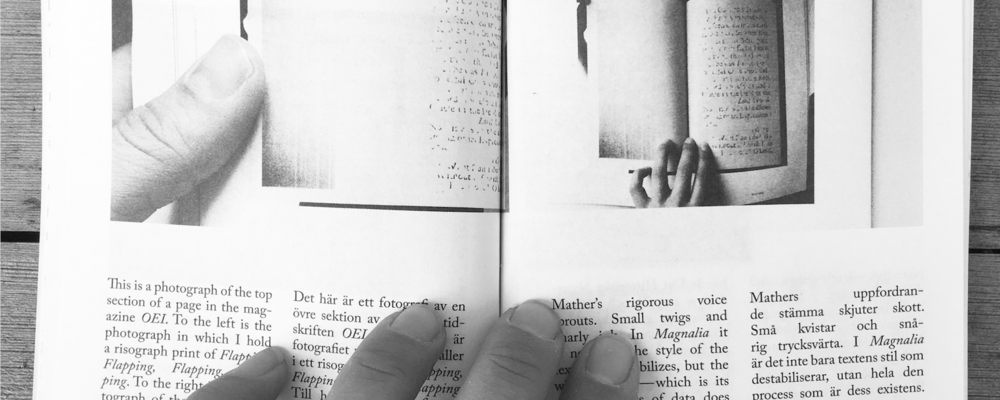The University of Gothenburg tops the list of institutions of higher education that have been awarded grants from the Swedish Research Council. Three research projects at the Faculty of Fine, Applied and Performing Arts – in the fields of literary composition, musicology and visual arts – will divide a total of 9,229,000 kronor.
One of the projects, Writing Visual Relations, was awarded 2,766,000 kronor. Researcher Imri Sandström of HDK-Valand will use the funding to examine opportunities to write about the visual arts.
“With one foot in literary composition and one in visual arts, this research project has been taking form inside me for a long time,” she says. “It’s going to be really fun to have the chance to devote myself to the relationship between verbal language and pictures.”
Words and images side by side
In both the visual arts and literature there is a long tradition of working with words and images side by side, a tradition of describing pictures in words and of writing pictures – that is, giving verbal expression to a visual expression. Sandström believes that a common conception of the visual and the written is that there is a chasm between the two.
“But really it’s more of a relationship, a mutual dependency in which each is contingent upon the other,” she says.
“Naturally there are differences between text and image. But rather than treating them like two separate forms of expression – with a gap that must be bridged – I base my work on the relationship between them and examine how their differences interact.”
Essays and poetry
The research work will include the writing of essays and poetry. These are to be shaped by so-called ekphrasis, a literary device used to capture the expression of a picture. The use of ekphrasis is relatively common, but it often comes up and passes by unnoticed. “As part of my research, it’s important to make ekphrasis visible. Who is writing? What is being visualised in the text, and how? And what ideological approaches can be distinguished in these representations?”
Sandstöm hopes that her research will contribute new knowledge that can benefit the visual arts as well as literary composition and artistic research.
The second research project is Ecologies of Dissemination: decolonial knowledge practise, feminist methodology and Open access, which is led by researcher Eva Weinmayr at HDK-Valand. The project has been awarded 2,956,000 kronor and will examine potential strategies for disseminating artistic research. To that end, Weinmayr’s work will include developing a framework that fosters new ways of spreading research findings.
High marks for the doctoral programme
HDK-Valand’s two artistic research grant recipients have in common that they have recently finished their studies in the school’s doctoral degree programme. Mick Wilson, who is a professor of art and the programme’s director of studies, is gratified that his former students have been awarded grants.
“This is evidence of Imri and Eva’s high calibre as researchers, their originality and dedication as practitioners, and of course their hard work over many years,” he says.
Wilson thinks the Research Council’s decision can also be seen as high marks for the doctoral programme.
“Hopefully this means that our training in the craft of research is preparing academics for future opportunities and careers as research leaders,” he adds.
Code in printed sheet music editions
The Swedish Research Council’s third grant was given to Joel Speerstra, senior lecturer at the Academy of Music and Drama. His project, The Hidden Pantheon: Decoding Riddles in Baroque Keyboard Music, received 3,507,000 Swedish kronor. In the project, Joel Speerstra will study examples of musical code in printed sheet music in the emblematic tradition during the Baroque.
"I want to investigate how a group of Baroque composers – Froberger, Buxtehude, Pachelbel, Jacquet de La Guerre, Pasquini, Muffat, Kuhnau and Fischer – were involved in a joint play with musical puzzles, a play with a musical code that has fallen into oblivion," says Joel Speerstra.
What does it mean for you to get funding from the Swedish Research Council?
"Sometimes you have a project you just have to work with regardless of whether you get supported or not, and this is such a project for me. I am deeply grateful to the Swedish Research Council that I get the opportunity to immerse myself into this world in dialogue with students from the Academy of Music and Drama."
By Åsa Rehnström

